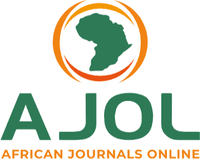Effect of Vascular Wilts Pathogen (Fusarium oxsporium) on the Nutritional Contents of Oil Palm in the Savannah Ecological Zone of Nigeria
DOI:
https://doi.org/10.56892/bima.v8i2.689Keywords:
Fusarium oxysporium, Nutritional values, Oil palm, Vascular wiltAbstract
Oil palms are versatile tree crops with economically valuable parts. The primary product obtained from oil palm is the palm fruit, which is processed to produce commercial products such as palm oil, palm kernel oil, and palm kernel cake. This study evaluates the effect of the vascular wilt pathogen (Fusarium oxysporum) on the nutritional value of oil palm in the Savannah Ecological Zone of Nigeria. A Complete Randomised Design (CRD) was employed in this research. Oil palm seedlings displaying fungal symptoms were collected, and the pathogen was isolated and identified using standard techniques. The effect of the pathogen on the nutritional values of the oil palm was determined using proximate analysis. Data were analyzed using analysis of variance (ANOVA) at a 0.005 level of significance. The results revealed the prevalence and severity of vascular wilt on oil palm seedlings and trees in the Kurmi plantation. The treatments were monitored at varying concentrations of the plant extracts. The effects of neem root were evident at concentrations as low as 40%, which coincided with the lowest mean of 24.33. The lowest mean for effective isolation of the organism was at a concentration of 80%, which were 39.17 for tobacco leaf. The nutritional composition of oil palm seedlings indicated that the levels of moisture, ash, crude protein, fat, fiber, and carbohydrates made the seedlings potentially susceptible to fungal diseases. The study recommended that the government and host communities implement integrated disease management practices combining cultural, biological, and chemical control methods to effectively manage fungal diseases in the Kurmi plantation.





